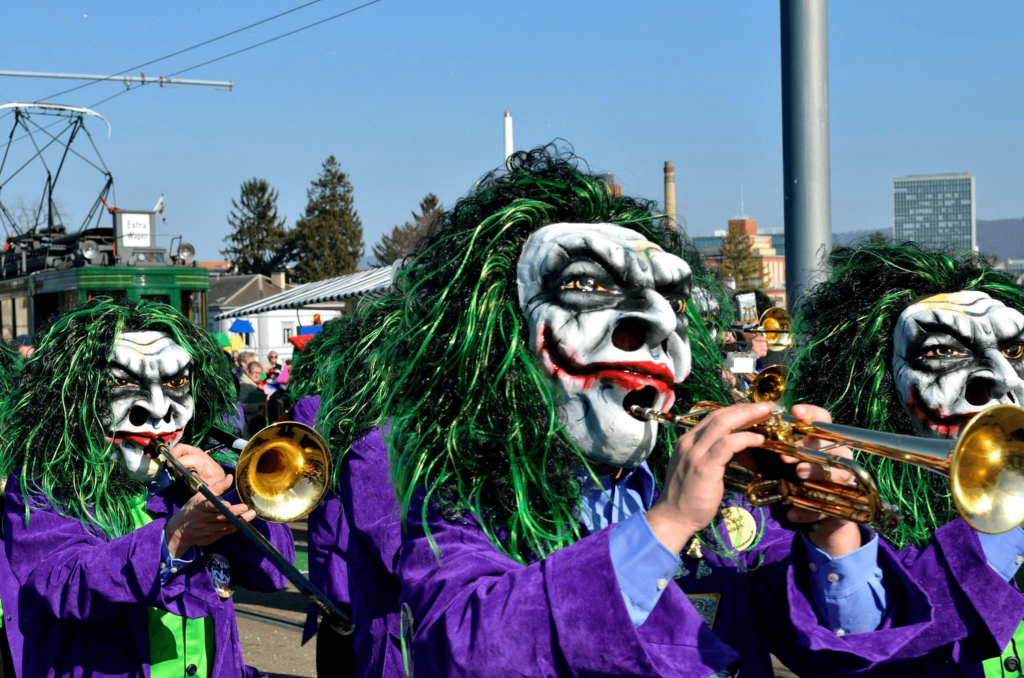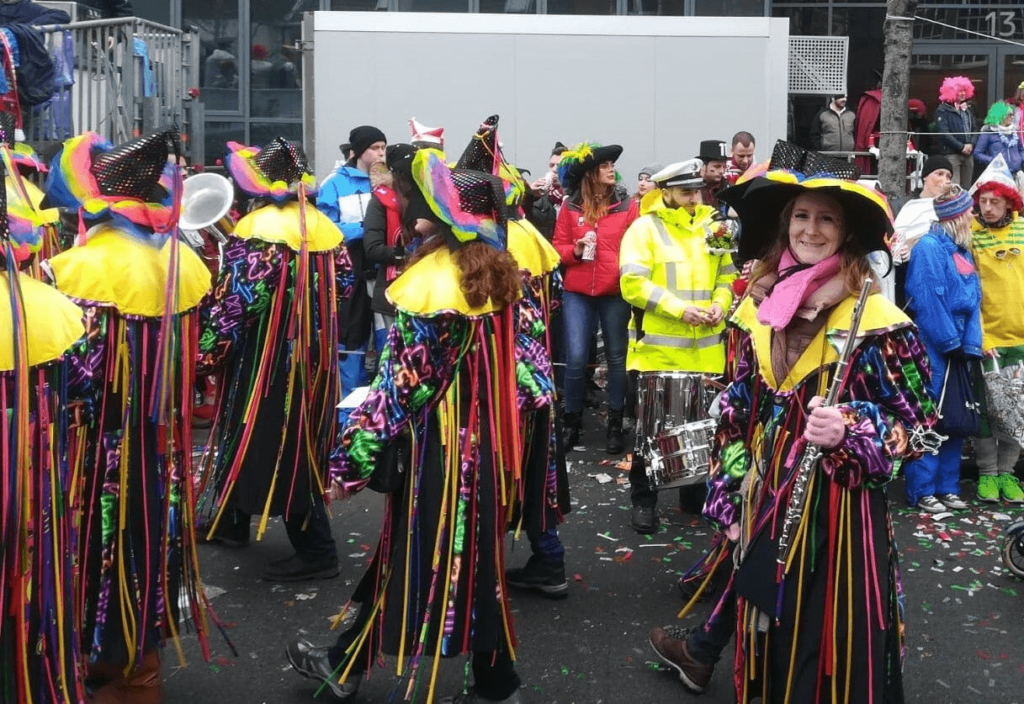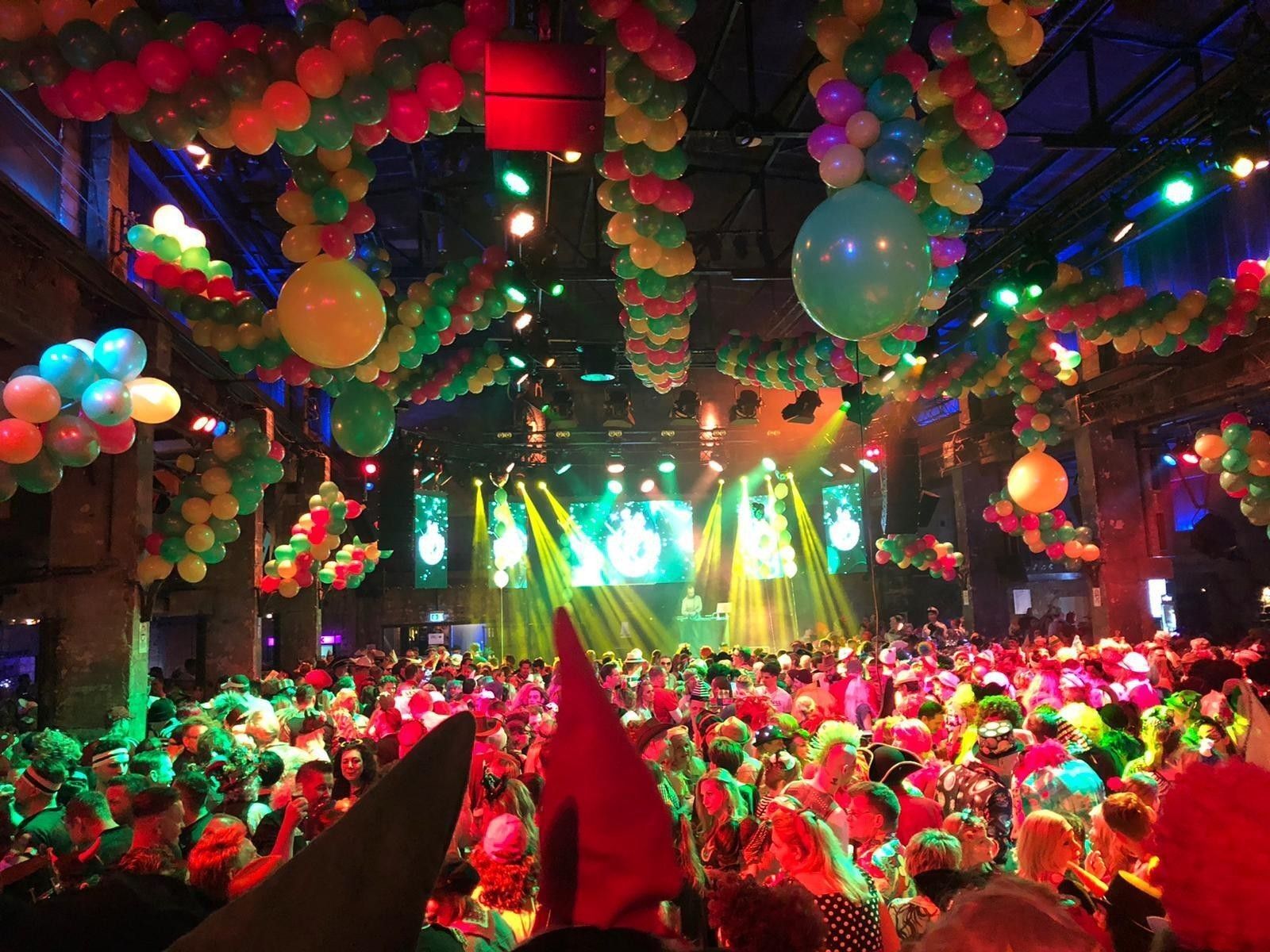Costumes, colors and celebrations – Carnival might be the most extravagant festival celebrated in many different ways all around the world.
While on these days colourful parades with over a million of costumed people, decorated floats, music as well as dance troupes roam the streets of Cologne, the legendary parades with dancers from the best samba schools attract visitors from all over the world to Rio de Janeiro. In Venice, however, the carnival season is even more pompous. On the weekend before Ash Wednesday, luxurious masquerade balls as well as parades of floats and gondolas take place, accompanied by fireworks, historical costumes and sparkling masks covered in pearls, feathers and sequins.
Discover where this colourful hustle and bustle comes from and why Carnival is celebrated by millions of people around the world every year in this article.
Origins of Carnival
The name «Carnival» originates from the Late Latin expression «carne levare», meaning «remove meat». Thus, it takes on the approaching fast, a time, during which the consumption of meat isn’t allowed. To be more precise, Carnival dates back to the Middle Ages and is celebrated before the six-week period of Lent before Easter. During the time before the fast, people were to use up all their stocks of perishable food. Meanwhile, there was definitely no shortage of indulgence, as people feasted on foods such as meat, dairy products, eggs, fat, sugar and alcohol, which were forbidden during Lent.

At the same time, people would celebrate extensively, as Carnival is considered a time to escape from social norms and rules, especially those of church life. A way to turn the public order upside down and to criticise society during Carnival is by dressing up. It all started with costumes of devils and fools in protest against the church, which had branded Carnival as devilish. But as time went on, the costumes became more and more extravagant. Further characters such as animals, harlequins, old aunts, wild men and even comic figures were added to the typical Carnival disguise.
In some places, this annual festival is so important that it is referred to as the «fifth season». In Switzerland, Germany and Austria, the Carnival season usually begins on 11th November at 11:11 a.m. sharp and reaches its peak in the week from «Dirty Thursday» to «Ash Wednesday» in February, the last day of carnival.
Carnival in Switzerland

But what about Carnival in Switzerland? Cheerful atmosphere, bright colours, foolish costumes, loud music and fine food – these things are common to all cantons. Depending on the region, however, the individual customs and the time at which Carnival is celebrated differ. In order to demonstrate a couple of these different traditions, we will now introduce you to the two most famous and largest carnival events in Switzerland.
Basler Fasnacht – «drey scheenschte Dääg»
Switzerland’s biggest Carnival celebration takes place in Basel with up to 100,000 participants. The three (most beautiful) day long festival, or the «drey scheenschte Dääg» begins on the Monday after Ash Wednesday. At four o’clock in the morning, the participants play a Carnival prank, the «Morgestraich». At this time, all the lights in Basel’s city centre are switched off completely. Then, cliques of pipers and drummers, whose elaborately painted lanterns are the only sources of light, parade through the city. Dressed in costumes and wearing masks called «Larven», they play loud marching music. With their clothing, the cliques usually criticise a subject, mostly a certain theme of contemporary history, in a satirical way. For example, «Waggis», a traditional figure of the Basel Fasnacht with a big nose and colourful clothes, is supposed to represent an Alsatian day labourer. Meanwhile, the costumes of «alti Dante» poke fun at elderly ladies.
The «Morgestraich» is followed by exciting parades, also called «Cortèges», loud Gugge concerts with brass instruments and amusing «Schnitzelbänke». The latter are a collection of a few short verses and are recited in public to give a humorous account of current events. In between, participants indulge in traditional carnival foods. In addition to «Ziibelewaije» and «Kääswaije», they also include the Basel flour soup, which consists of flour and water and used to be eaten in poor households for breakfast. The Basel carnival ends exactly 72 hours after the «Morgestraich» with the «Ändstraich», the closing prank. This is the last time that whistles and drums are played to bid farewell to «Frau Fasnacht».
Luzerner Fasnacht – «Urknall» and «Fötzeliräge»
At five in the morning on «Dirty Thursday» Brother Fritschi, the imaginary head of Lucerne’s oldest guild, marks the start of the six-day Lucerne Carnival with the «Urknall». Right after this Big Bang, it is time for everyon to roar, or «brüeläää», in order to drive away the evil winter spirits. Then, on Kapellplatz, the largest carnival party in Switzerland begins with the «Fötzeliräge», a rain of confetti which are also called «Batzli» or «Räppli».
The traditional orange throwing at the Fritschibrunnen is followed by the Fritschiumzug through the city of Lucerne. Dressed up in colourful costumes, the festival is celebrated with odd yet rhythmic brass music played by Guggen musicians with drums, timpani and trombones. Almost 80 parade floats follow the same route through the city and thematise social and political events in a humorous way. The grand monster concert, the «Monstercorso» and the farewell to Brother Fritschi mark the end of the Lucerne Carnival on the following Tuesday evening, «Güdisdienstag», at eleven o’clock in the evening.











What do you think?